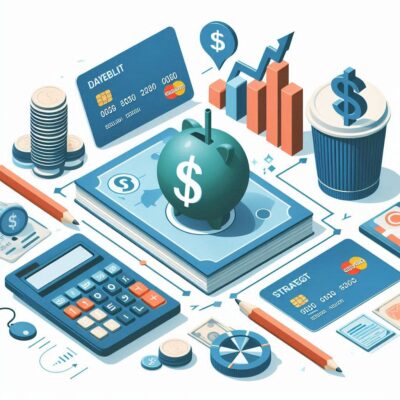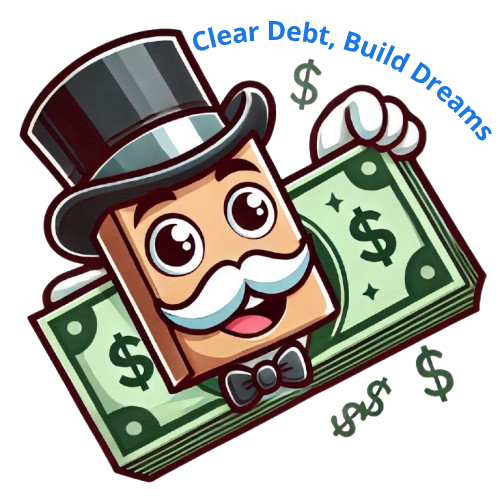Credit card debt can sneak up on you. One moment, it’s just a small balance after a shopping trip, and the next, it’s a mountain of debt with ever-mounting interest that seems impossible to pay off. This isn’t just a financial issue but a significant stressor that can affect daily life.
High-interest rates are one of the primary reasons why credit card debt becomes overwhelming. Even if you’re making minimum payments, interest can quickly add up, making it feel like you’re running on a treadmill going nowhere. This constant accumulation makes it challenging to see progress, which in turn can be discouraging.
Ignoring credit card debt is definitely not an option. It snowballs, leading to increased stress, potential legal action, and a damaged credit score. Damage to your credit score can make future financial activities like getting a mortgage or even a car loan more difficult and expensive.
Carrying debt isn’t just about the dollars and cents; it also takes a toll on mental health. The anxiety and stress that come with mounting debt can affect other areas of life, including relationships and job performance. Understanding this is key to managing not just your finances, but your overall well-being.
Here’s a little transparency: Our website contains affiliate links. This means if you click and make a purchase, we may receive a small commission. Don’t worry, there’s no extra cost to you. It’s a simple way you can support our mission to bring you quality content.”
Contents
Strategies for Paying Off Credit Card Debt
When it comes to tackling credit card debt, having a game plan is crucial. Two popular strategies are the Snowball and Avalanche methods. Both have their merits, but they cater to different personalities and financial situations.
The Snowball method focuses on paying off the smallest balances first. It’s about quick wins to keep you motivated. Once a small debt is cleared, you move the payments to the next smallest one. This strategy can boost your morale and give you a sense of accomplishment early on.
The Avalanche method, on the other hand, prioritizes the highest interest rates first. You focus on paying off the debt costing you the most in interest. While this method saves more money over time, it might take longer to see progress, which can be discouraging for some.
Balance transfer options provide another avenue. These involve moving your debt to a new card with a lower or even zero percent introductory interest rate. This can reduce what you owe in interest and help you pay off the principal faster. Just be keenly aware of transfer fees and the terms once the introductory period ends.

Debt consolidation loans are worth considering too. These loans combine multiple debts into a single payment, ideally with a lower interest rate. It simplifies the repayment process and can make managing debt easier. However, be cautious of any origination fees and ensure the new interest rate is genuinely beneficial.
Seeking professional advice or debt counseling can also be invaluable. Professionals can offer personalized strategies and support to help you manage and reduce debt. Don’t hesitate to reach out to these resources if you feel overwhelmed.
Creating a Debt Repayment Plan
Crafting a solid repayment plan is the foundation of tackling credit card debt. The first step is calculating your total debt, including all balances and interest rates. Knowing exactly what you owe gives you a clear picture and can help you prioritize which debts to tackle first.
Budgeting is an essential part of any repayment plan. Review your income and expenses to identify areas where you can cut back. Even small changes, like cooking at home more or cutting down on subscriptions, can free up extra cash to put towards your debt. Creating a budget helps ensure that you’re living within your means and directs extra funds towards your debt.

Setting realistic and achievable goals keeps you on track. Break down your total debt into manageable monthly payments and set deadlines for each milestone. This makes the task less daunting and allows you to celebrate small victories along the way.
Tracking your progress is crucial. Use apps or spreadsheets to monitor payments and see how much your debt decreases each month. This can be incredibly motivating and keeps you committed to the plan.
To pay off $5000 in debt in 6 months, you’ll need to be disciplined and aggressive with your approach. Start by cutting non-essential spending and diverting those funds to your debt. If possible, increase your income through side jobs or selling unused items. For example, if you can allocate $850 per month to your debt, you’ll hit your target in six months. Breaking it down this way makes the goal feel more achievable and gives you a clear target to aim for.
Utilizing Extra Income to Accelerate Debt Repayment
Finding ways to bring in extra income can make a significant difference in how quickly you pay off your credit card debt. Consider taking on a side hustle or part-time job tailored to your skills and interests. Whether it’s freelancing, driving for a ride-share service, or even pet sitting, every bit helps.
Another effective method is selling unused items around your home. Old electronics, clothes, and furniture can all be sold online through various marketplaces. It’s a win-win: you declutter your space and earn extra money to put toward your debt.
Tax refunds and work bonuses are other potential sources of extra funds. Instead of spending these windfalls, channel them directly into your debt repayment plan. It might be tempting to splurge, but prioritizing debt repayment will benefit you much more in the long run.
Be mindful of the temptation to incur more debt, especially when boosting income. It’s easy to fall into the trap of spending more when you earn more. Stick to your budget and focus any additional income exclusively on paying down your existing debt.
Lastly, if you’re finding extra income opportunities to be limited, consider cutting back further on expenses. Look for negotiable areas within your budget, like entertainment or dining out, and allocate those funds toward paying off your debt faster.
Maintaining a Debt-Free Lifestyle Once You’ve Cleared Your Debt
Once you’ve managed to pay off your credit card debt, it’s crucial to maintain the habits that helped you get there. Building an emergency fund should be one of your top priorities. This cushion will help you handle unexpected expenses without turning to credit cards.
Establishing good credit habits is another key step. Continue to pay off your balances in full every month. Avoid carrying a balance and, if possible, use your credit cards only for what you can afford to pay off immediately. This not only keeps you debt-free but also positively impacts your credit score.
Maintaining a budget and saving regularly are practices that will keep you on track financially. Even though you’re out of debt, having a budget ensures you’re not overspending and allows for disciplined saving.
Financial education is invaluable. Stay informed about personal finance to make better decisions and avoid falling back into debt. Books, podcasts, and seminars can all provide ongoing learning and support.
Lastly, leverage resources for ongoing financial support. Whether it’s a financial advisor, online forums, or support groups, having a go-to resource can provide guidance and keep you accountable. Surrounding yourself with a community that supports your financial health can make a lasting difference.

